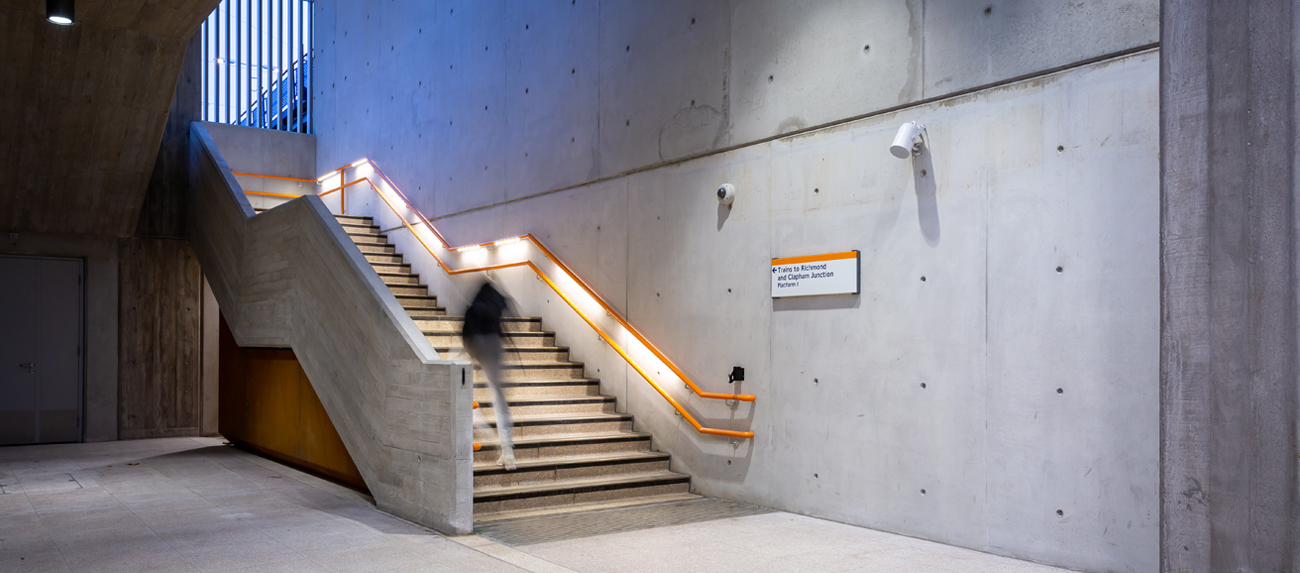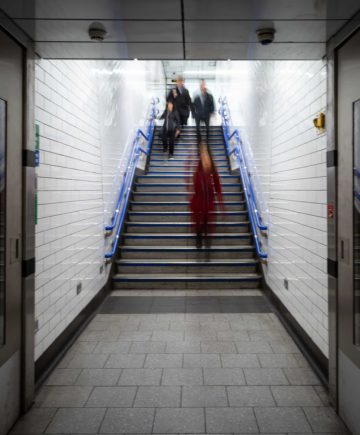Standard terrazzo tiles would normally achieve an SRV of approx. 65 in the dry and 35 to 36 in the wet when ground on site to a standard 80.s grit finish. For more sensitive areas this can be increased to approx. 68 in the dry and 45 in the wet by incorporating anti-slip additives in to the tile matrix. Terrazzo tiles would normally be tested using the ‘Pendulum’ method and Quiligotti have in house testing facilities which can test production tiles prior to despatch.
Yes, but Quiligotti would recommend the use of tiles containing anti-slip additives in these locations to enhance the Slip Resistance of the tiles. Alternatively, Quiligotti can manufacture tiles from their ‘Slip Resistant’ Range which contain anti-slip additives and produce a textured finish more suitable for external use. These textured finish tiles would be fixed ‘laid-only’ to maintain the finish, and not ground and polished to a smooth finish. In both cases, the sub-base would need to be solid (tamped concrete preferably) to receive the tiles and bedding.
Terrazzo tiles are normally fixed on to a light tamped concrete sub-base using a semi-dry 1:3-4 cement:sand screed with the tiles and bedding being laid at the same time. A finishing zone for tile and bed of approx 75mm would normally be ideal but based on using a 28mm thick tile the general parameters would be between 50 – 100mm for a ground bearing slab.
The standard sized tile ( and most economical ) manufactured by Quiligotti is 300 x 300 x 28mm. Other non-standard sizes which can be produced are as follows :
297 x 297 x 28mm
397 x 397 x 33mm
400 x 400 x 33mm
497 x 497 x 38mm
500 x 500 x 38mm
597 x 597 x 42mm
A pallet of standard 300 x 300 x 28mm tiles contains 216 No tiles (19.44m2) and weighs approx 1300kg. A full wagon would typically be 20 pallets (389m2)
You would normally fix an expansion joint in the terrazzo floor to mirror any joints in the concrete sub-base. The type of joint would depend on the anticipated movement (to be determined by the Structural Engineer). If there are no joints in the concrete and the floor area is larger than approx 6m x 6m it would be normal to incorporate rigid crack inducer strips in to the floor to divide the floor up into sensible bay sizes. A perimeter isolation joint would normally be formed at the junction with walls using polystyrene or similar say 6mm wide.
Quiligotti supply precast terrazzo items to match colours in our tile range, or in bespoke design if required. Enquiries should be directed to the Sales Office who would be able to provide a quotation subject to receipt of the relevant information regarding quantities, sizes etc.
Quiligotti can provide samples of tiles from standard ranges generally within a few days. For bespoke samples which need to be made, you should allow a period of approx 10 working days. Typically samples are sent out in a 150 x 150 x 28mm format by carrier.
Generally Quiligotti manufacture tiles to order. However, there are always tiles available from stock in various colours and quantities which are ready for immediate order / despatch. Once a customer confirms colours and quantity needed, Quiligotti can advise what is available and provide samples where required.
Terrazzo is very cost effective and easy to clean and maintain. Ongoing cleaning of terrazzo floors is normally carried out using only warm water and a neutral detergent (PH7). For detailed information on cleaning contact our Sales Office and we can send you are full recommendations for Cleaning and Maintenance of terrazzo floors.
A very large number of different coloured tiles can be produced by using various combinations of the different pigments and aggregates which are used by Quiligotti. Bespoke samples can be produced where required and Quiligotti would endeavour to try and match existing terrazzo floors with the materials they have available.
Terrazzo tiles can be laid in conjunction with underfloor heating systems but the method of installation would be dependent on the type of underfloor heating being installed to determine the best method of laying the tiles.
Have a question, or would like to discuss your next project?


